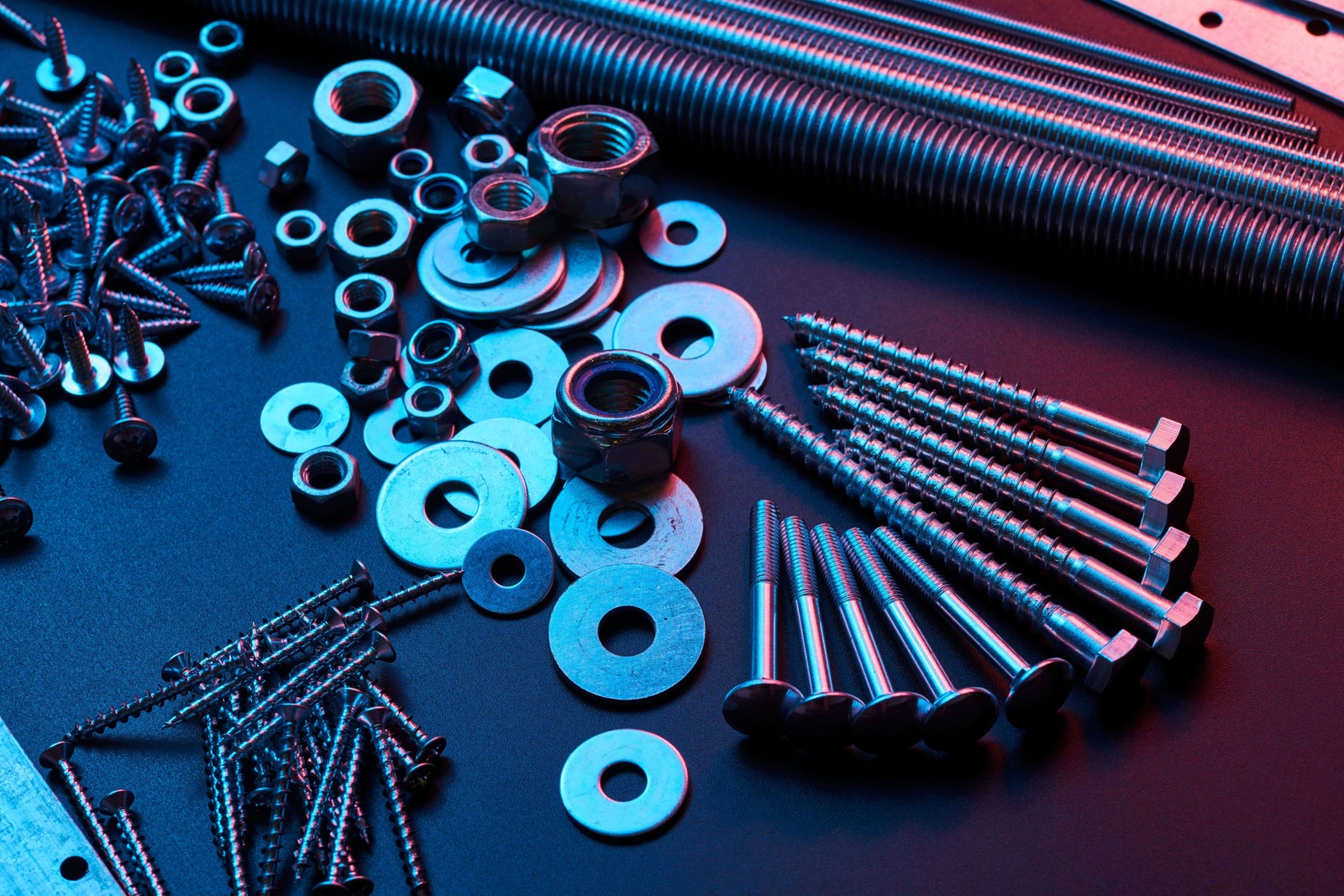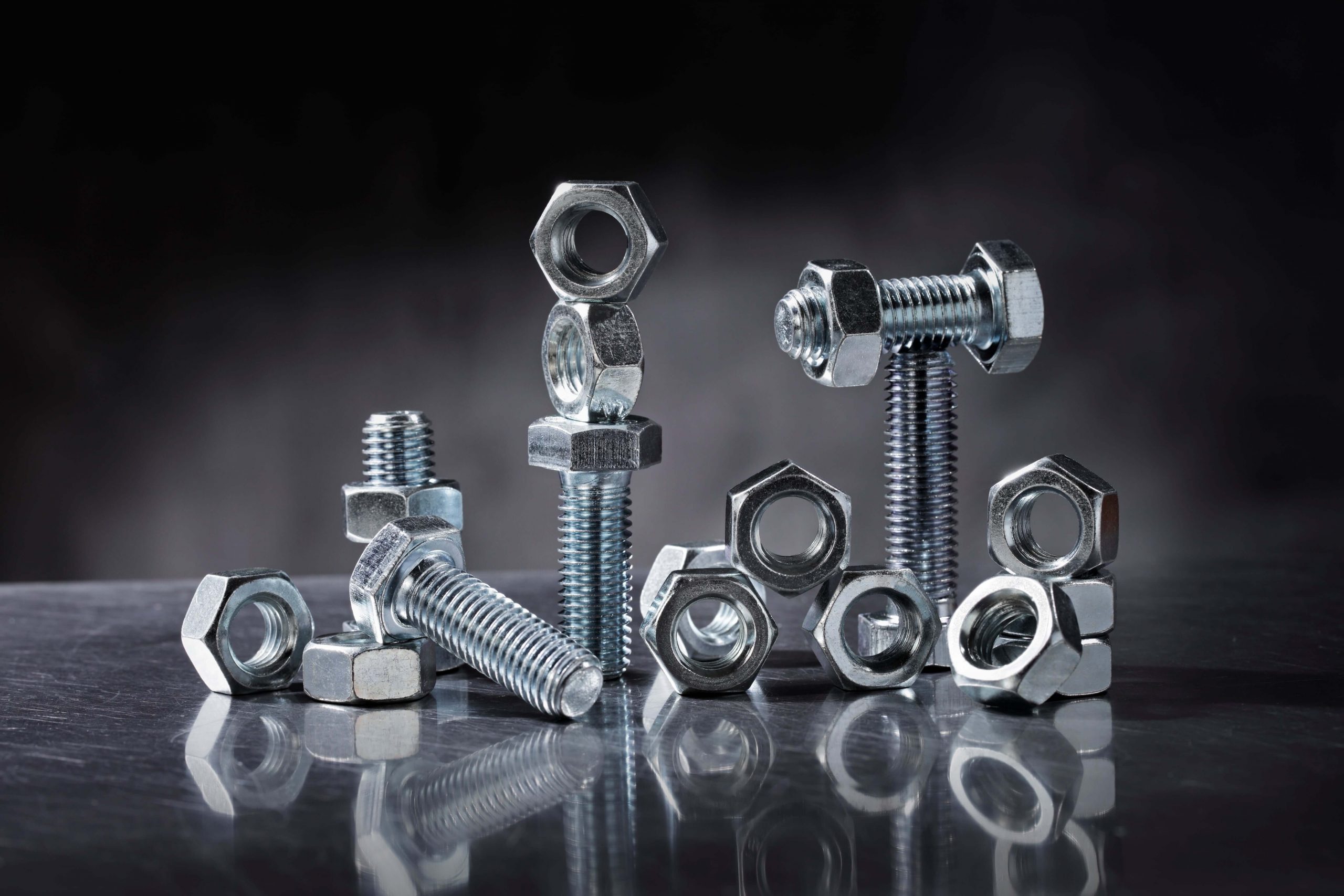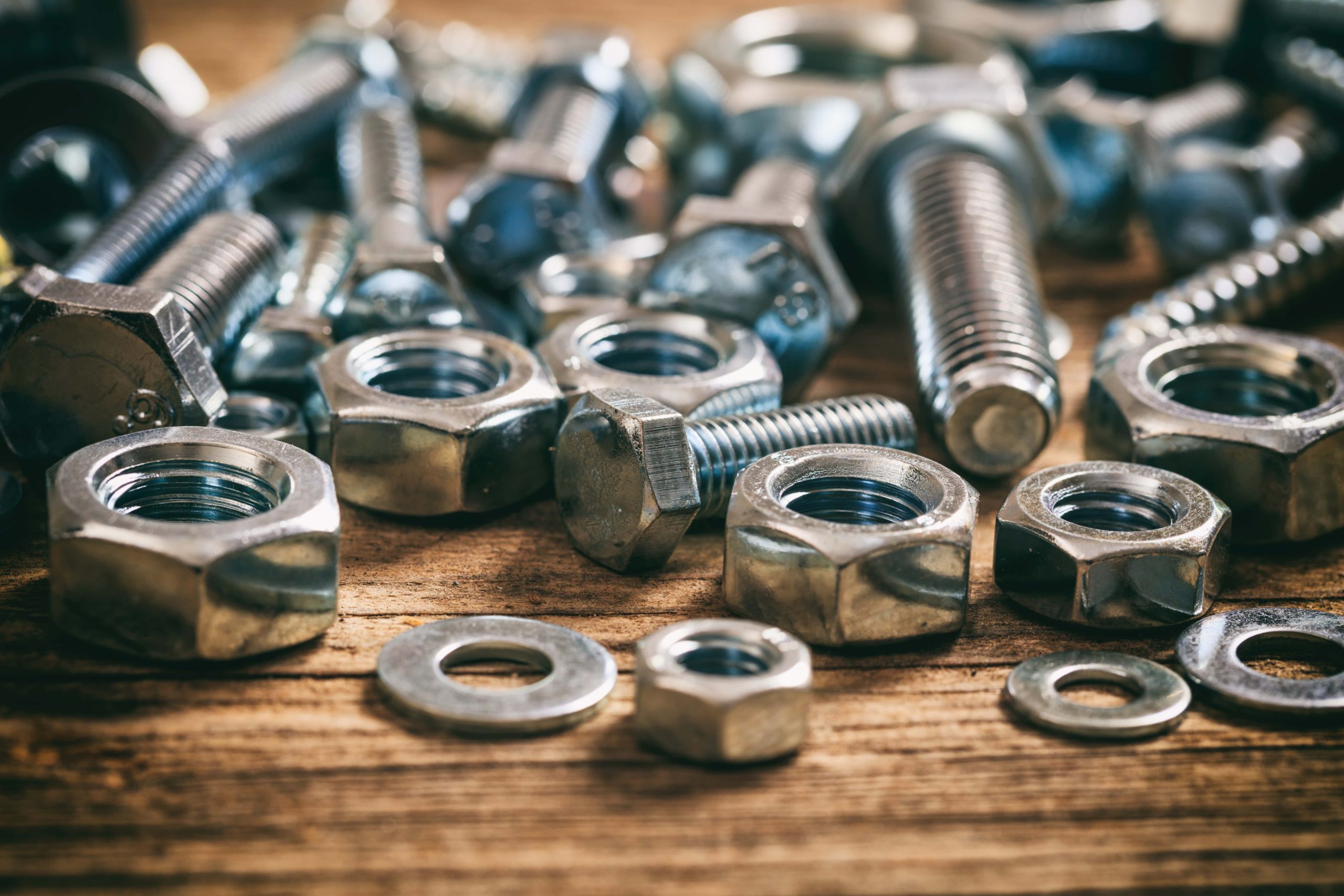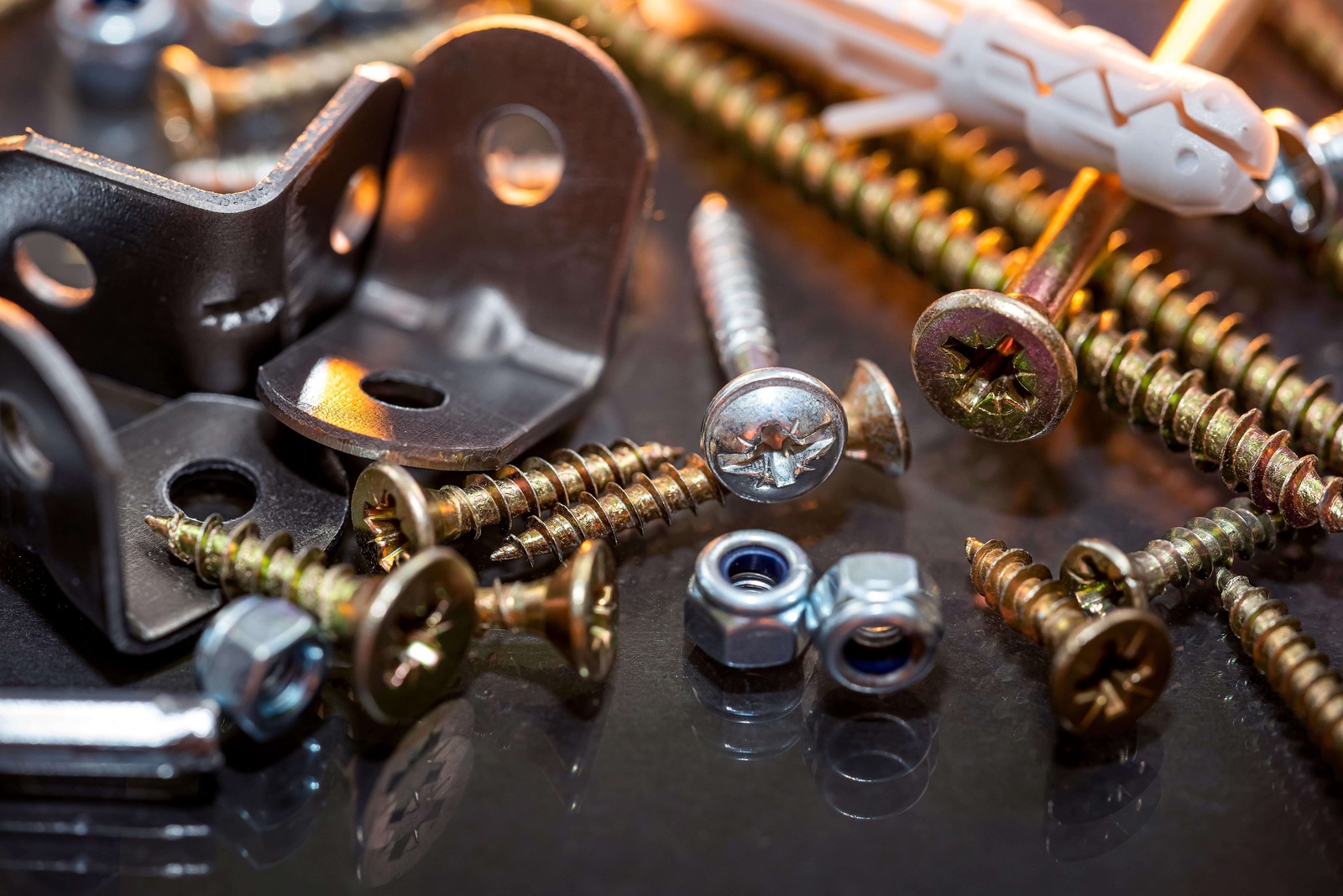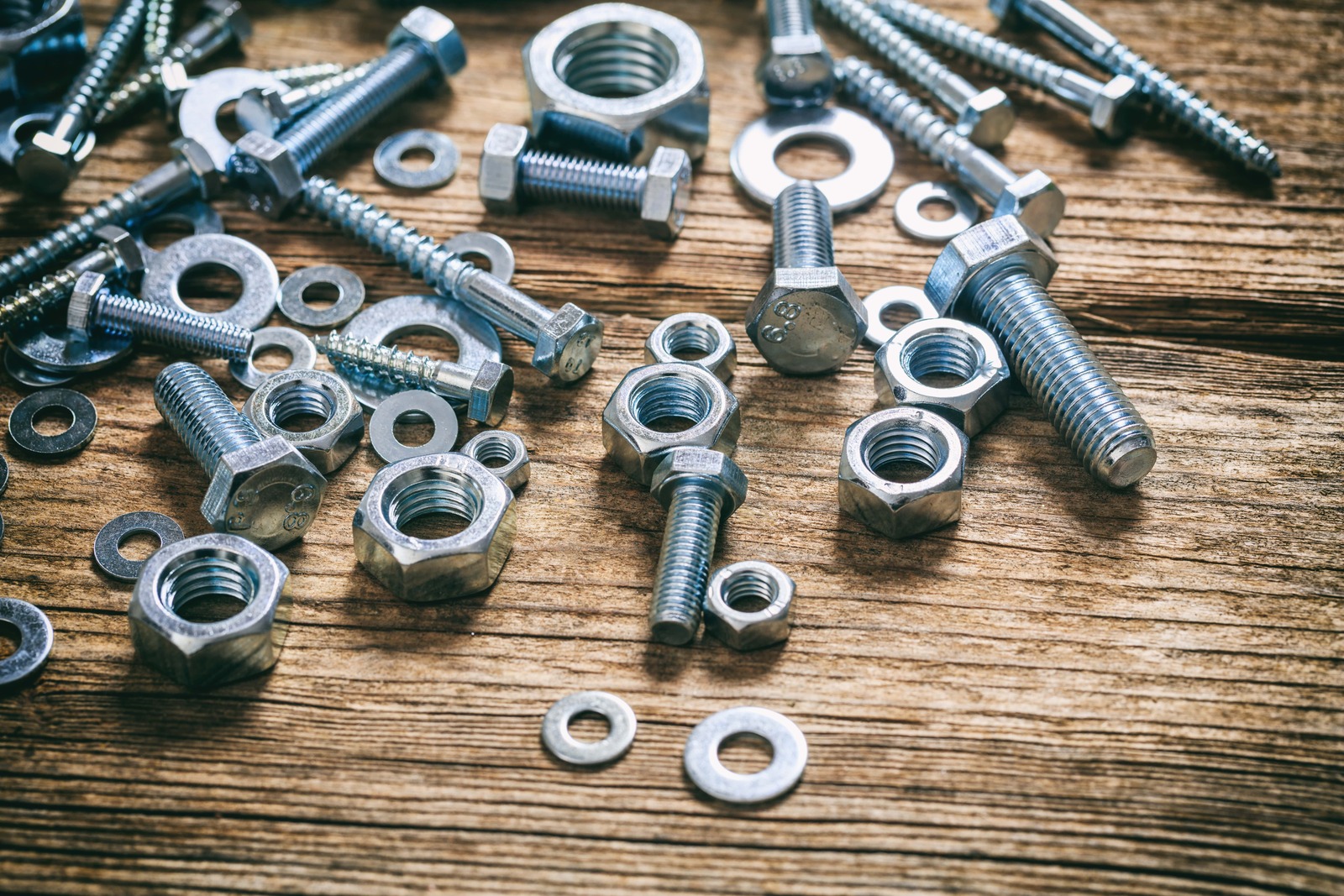The Different Types of Fastener
Fasteners are the unsung heroes of the building and manufacturing world – these small but mighty devices are the glue that holds everything together. From bolts and nuts to screws and adhesives, countless types of fasteners are available, each with unique characteristics and applications.
Here at RCF Bolt & Nut, we’re experienced and committed industrial fastener suppliers and manufacturers in the UK who have provided a wide variety of fastener options to our customers for many years. We understand the importance of choosing the correct fasteners for your needs, so we have compiled this guide to help you decide the best fastener option for you!
What Are Fasteners?
Fasteners are the glue that holds our world together. Fasteners play a crucial role in keeping everything in its place, from the buildings we live and work in, to the cars we drive and the furniture we sit on. These small but mighty devices come in many forms, such as screws, bolts, nails, and adhesives, and are found in a wide range of industries, from construction and manufacturing to aerospace and medical. With fasteners, our world is a more secure and functional place.
Many different types of fasteners are available on the market, and choosing the right one depending on your requirements is essential. Keep reading below to learn more about the fasteners available to you!
Screws
Screws, the workhorses of the fastener world, are the go-to for holding a wide variety of materials together, from wood and metal to plastic and brick. Their pointed tips make it easy to insert them into pre-drilled holes, and a simple twist with a screwdriver or power tool secures them in place. From wood screws for woodworking and furniture making to machine screws for industrial and mechanical applications to self-tapping screws for creating threads in materials without them, and drywall screws for, well, drywall – there’s a screw for every job. At RCF Bolt & Nut, we stock a range of coach screws, socket screws, and square plate washers for your convenience.
Nails
Nails, the trusty sidekicks of screws, are often used in woodworking applications. They are driven into wood with a hammer or nail gun, and their pointed tips make it easy to insert them into pre-drilled holes. From small and decorative finishing nails to larger and stronger framing nails, to roofing nails that are galvanised to resist rusting – nails are the unsung heroes of construction.
Bolts
Bolts, the heavy lifters of the fastener world, are similar to screws but with a threaded shaft that allows them to be screwed into a nut or other threaded receptacle. This creates a solid and secure bond between two objects, making them perfect for applications requiring high stress and force levels. From the smooth and rounded carriage bolts for woodworking to the hex bolts with their six-sided heads for industrial and mechanical use to the U-shaped U-bolts for securing pipes and other cylindrical objects – bolts have got you covered.
Rivets
Rivets, the old-school fasteners, are similar to nails in that they hold two or more objects together but with a cylindrical body that is inserted into a pre-drilled hole. The ends of the rivet are then flattened, creating a solid and secure bond. Rivets are often used in applications with high stress and force levels. From pop rivets for quick and easy installation to solid rivets for maximum strength and durability to blind rivets for when access to the back side of the workpiece is limited – rivets are a tried and true fastening solution.
Adhesives
Adhesives, the versatile fasteners, are a type of liquid or paste that is used to bond two or more objects together. They come in various forms, such as glue, epoxy, and silicone, and can bond a wide variety of materials, including wood, metal, plastic, and even glass. Adhesives are often used in applications where a strong bond is needed, but screws or nails can’t be used or when a fastener would be visible and an adhesive bond would be more aesthetically pleasing. Super Glue, PVA glue, epoxy, and silicone adhesive are some popular types of adhesives.
Other Types of Fasteners
From clips and pins to clamps and more, countless other types of fasteners are used in specific applications. For example, clips are often used to hold wires and cables in place, while pins are used to hold objects together in a non-permanent way. Clamps are used to hold objects together with a tight grip and are often used in woodworking and metalworking applications. Additionally, washers are an important element as they provide structure and stability to bolts, screws, and more.
When to Use Bolts vs Screws
The unique differences between bolts and screws lie in more than just the tools required to fit them – a screwdriver for a screw or a wrench for a bolt. The implementation of them also rests on the requirements of whatever is being fastened, and this is where it’s important to know the difference between bolts and screws in how they’re built so they can be used to their full potential.
Bolts: Bolts tend to be non-tapered, require a nut and washer for use, have threads that contain a stronger holding power and are best for heavy-duty applications.
Screws: Screws are tapered and use a washer. However, nuts are only needed occasionally. The threads on the screws provide a sure grip and are best for lighter applications.
Choosing between a screw and a bolt ultimately comes down to the materials that are being fastened. For example, for lightweight materials like plywood, drywall, and plastic, it is better to use screws, while heavy-duty materials like concrete and metal are better for bolts.
How Do Washers Work With Bolts?
It may seem like an unnecessary extra step when assembling materials for fastening. However, our experts at RCF Bolt & Nut recommend using washers when installing a bolt. If you want to risk damage or reduce the longevity of your fastening, you can forgo this step. However, it’s important to keep in mind that washers provide a smooth surface for nuts to push against, which keeps the fastening tight and prevents them from coming loose over time.
Additionally, washers protect the surfaces of the materials being fastened. For example, home projects like furniture assembly use washers to prevent the surface from denting or wearing down over time. Washers can also be used with screws to offer the same level of surface protection – whether this is in furniture again or wall hangings.
The Anatomy of a Bolt
Understanding how different types of fasteners work is essential for choosing the right one for your project. Bolts are a popular fastener choice, being strong and hard-wearing compared to other options and more suitable for heavy-duty applications. Here at RCF Bolt & Nut, we offer various bolt options, including holding-down bolts and hexagon bolts, and the anatomy is designed for stronger applications. The anatomy of a bolt includes:
- Thread: The thread refers to the helical ridges that spiral around the body of a bolt and interact with the corresponding ridges in a nut. These ridges provide the necessary friction for secure fastening.
- Runout: Runout is the specific point on a bolt where the thread ends and the smooth, threadless shank begins. It is the area that “runs out” of thread and serves as a transition point.
- Shank: The shank is the section of the bolt that is smooth and devoid of any threading. It is located between the runout and the head of the bolt.
- Radius: The radius denotes the curved region between the shank and the head of the bolt. It provides a gradual transition between these two sections, ensuring structural integrity and optimal load distribution.
- Head: The head of a bolt is the part that is designed to be held by a torque tool for tightening or loosening purposes. It typically features a specific shape or design that allows for easy manipulation and application of torque.
- Thread length: Thread length refers to the measurement of the threaded portion of the bolt. The length can vary depending on the intended purpose of the bolt, such as the thickness of the materials it is meant to fasten together.
- Grip length: Grip length, also known as clamped length, represents the total thickness of the materials being joined by the bolt. It is the section where the bolt provides grip and holds the materials firmly together.
- Nominal length: The nominal length of a bolt is the sum of the thread length and the grip length. It represents the overall length of the bolt, including both the threaded and unthreaded sections, and provides a comprehensive measurement for selecting the appropriate bolt size.
For more information, contact RCF Bolt & Nut now!
At RCF Bolt & Nut, we understand that our customers rely on us to provide the highest quality fasteners and unparalleled service. That’s why we are dedicated to ensuring that every one of our products meets the most stringent industry standards and that our customer service team is always available to assist you.
Whether you have a question about one of our products, need assistance with placing an order or have a concern about your delivery, our team of experts is here to help. We pride ourselves on our ability to provide our customers with the best possible service and to help them find the fasteners that meet their needs. So don’t hesitate to reach out to us; we are here to help you. For specific supplies, we provide socket cap screws, socket CSK screws, and allthreads, among others!
